FLEXIBILITY & STRETCHES FOR SURFERS
HERE’S TOP WAYS TO MOVE BETTER, IMPROVE YOUR STRETCHING, AND IMPROVE FLEXIBILITY
Give this a read, and I’ll give you the quick details of how to stretch more effectively. For the non-stretching folks, this is how you can get started effectively. The tops ways to move better.
Why?… You gotta’ get loose man. Most of the dudes over 30, or people with some gnarly previous injuries, you’re likely too stiff. Lack of flexibility is a huge prerequisite for injury and pain, and that goes for all athletic sports, especially surfing.
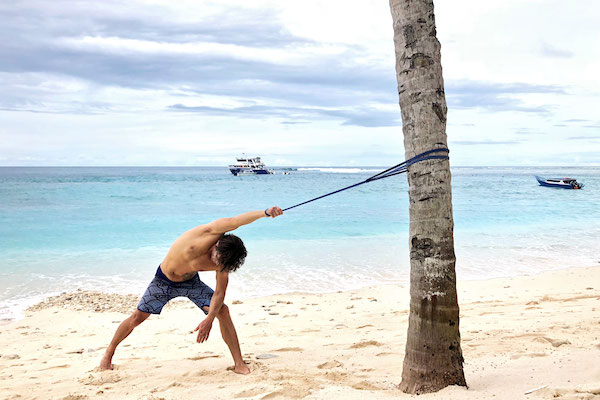
On the flip side of that, there’s some of you that are actually too flexible, or lacking strength through your full range. If that’s the case, you don’t need to actually stretch much, you need to get strong, but everything else still applies to you.
HERE’S HOW YOU GET MORE OUT OF YOUR STRETCHING
- 1)breath
- 2) time or duration of stretch
- 3 )aggressiveness of stretch.. tension 3-6/10
- 4) joint specific stretches, isolate muscles before full body stretching
- 5) using soft tissue methods
- 6) lock in with movement
BREATH
Inhale life. Probably stop smoking too, but overall, learn to breathe properly. Diaphragmatic breathing, also known as belly breathing is the physiologically “correct” breathing pattern. Most people today are what we call “neck breathers”, meaning they don’t properly utilize their diaphragm for breathing.
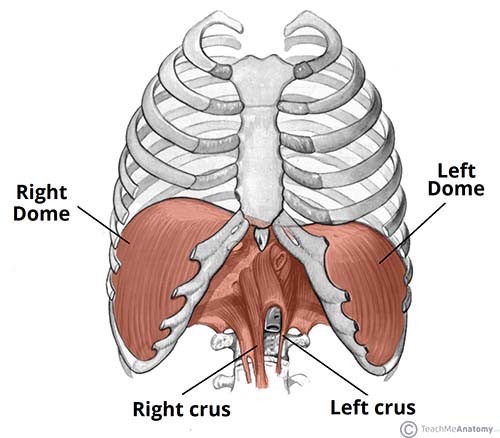
So how does this have any influence on your stretching? Your breath is one of the quickest ways you can influence your nervous system. It can increase stress levels and tension, or help to reduce it. If you’re trying to stretch and help your nervous system to release tension out of muscle groups, which nervous system state do you think you should be in?
Relaxed, or excited? Pretty simple huh? While you stretch, breath deeply, relaxingly, and diaphragmatically. The diaphragmatic part can take a bit of practice, but it would be well worth your time on re-establishing a proper breathing pattern.
So when you stretch, breath into your balls , or the other version for the ladies, relax the shoulders, relax the neck, and breathe slowly, deeply, and rhythmically. It should also not just be the belly outwards movement. Breathing should be 3dimensionally, also expanding laterally and posteriorly.
Here’s a full rundown on breathing:
HOW LONG SHOULD YOU HOLD A STRETCH
How long do you need to hold your stretch? 10seconds? 2minutes? This is where a lot of confusion kicks in with people in the fitness and yoga world spouting off some serious nonsense.
Unfortunately the answer isn’t quite cut and dry, because the duration of
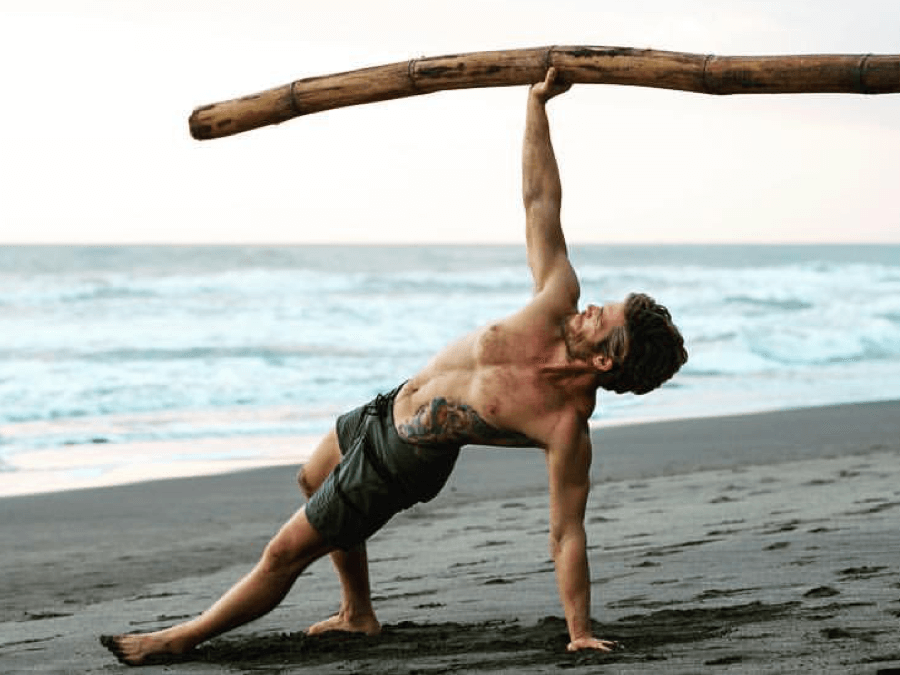
stretch depends on what you’re trying to accomplish, when you’re stretching, and how flexible or inflexible you already are.
There is a lot of science behind the various methods, when to use them, how to use them, and for what reason. I wish I could tell you a simple do this don’t do that recipe, but it really has to be specific to the individual.
Sometimes people need to hold a stretch for up to 2-3minutes, while other times or other people should use a 5second contract/relax method of stretching, or any of the other various stretching modalities.
They both have validity, but the key is to use them for a specific purpose. So really, I can’t give you a simple answer without first assessing you, your goals, your current flexibility, and your injury history.
What I can do is give you a few simple guidelines that apply to most people.
If you’re a super tight person, like really stiff and and inflexible: you should hold stretches for at least 30seconds. Even possibly up to 2 minutes if attempting fascial and nervous system tension. But Wait… not necessarily right before you train.
If you’re about to surf or train: don’t hold stretches for long periods, as this can “inhibit” the function of a muscle. Use more of a contract relax method of stretching and dynamic movements taking your body through ranges of motion. You want to prime your body for movement, not slow it down or impede muscle firing.
Before you train or surf, you want to look towards “dynamic” stretches that actively increase joint range of motion.
AGGRESSIVE STRETCHING-HOW HARD SHOULD YOU STRETCH
Just breathe, accept the pain, let go, you are not your pain, simply experience, be present….. butterfly fluff. I’ve heard some nonsense like this in the past, especially in some subpar yoga classes.

This is pretty simple. Don’t stretch really heavily. Think of a 1-10 pain scale. Take your stretch to about a 4-6. You should be able to relax at a 4-6level.
If you’re cranking it up to a 9, you’re basically freaking out your nervous system. Realize that your brain and nervous system create tension in the muscular system. With stretching you’re attempting to change the way the nervous system is talking to the muscular system.
Over stretching, increasing stress levels, cranking the hell out of a muscle trying to get it to loosen, tightening up your breath, these things don’t improve your flexibility.
Those alarm signals to the nervous system will basically stop any potential flexibility improvement because the nervous system is trying to protect the body. Ease up a bit, find your comfortable 4-6barrier, and chill, it’s all about the butterfly fluff.
ISOLATE MUSCLE GROUPS BEFORE GOING FULL DYNAMIC
A key to improving flexibility is finding which muscles specifically need to be “lengthened” or released. Consider a forward bend toe touch movement. If you have super tight hamstrings, they’re going to prevent your pelvis from rolling forwards (pelvic flexion) when you try to touch your toes.
The hamstrings attach to the back of the pelvis at the ischial tuberosity, and if they’re really tight they anchor the pelvis. This will prevent the pelvis from rolling forwards into flexion when trying to touch your toes. Since the pelvis can’t move, you are forced to excessively flex the spine or round the spine forwards.
This is essentially a bad thing, as your tight hamstrings are forcing you to put excess movement into your lumbar spine, because that’s the only way you can bend forwards.
So, if you’re in a yoga class and being told to become one with yourself and release tension into the light and universe, you won’t lengthen your hamstrings, you’ll just roll forward through the spine into excessive lumbar flexion.
So the key would be to find a stretch that isolates the hamstrings, lengthen them, and then work on toe touches. Make sense? You have to find what muscles are specifically tight, attempt to reduce the tension, and then work on full body stretches.
***CAVEAT, there are always caveats and exceptions to the body. Sometimes a specific muscle group is exceptionally tight because the nervous system is attempting to protect a joint, or nerve, or provide stability, or stay away from pain. This is where some skilled practitioners come in. More on this later.
Muscle Isolation. Most yoga or dynamic stretching skips this critical step. Going into a full body dynamic stretch is the goal, but first you need to isolate and stretch a specific muscle that may be pulling a joint out of alignment.
Isolate muscles, stretch them, and then get ninja dynamic. A quick example, I’m always tight through quads and hip flexors due to some postural stuff and core issues I’ve got.
Before I train, I’ll specifically stretch my quads / hip flexors, then get into full body dynamic stretches. Clear?.. I hope so.
ALWAYS TIGHT?… GET ASSESSED
This is the caveat explained, briefly. The more we learn about the brain / body connection, the more we realize it’s the brain (nervous system) that is regulating muscle tension.
If you’re always tight through a specific muscle, maybe it’s trying to protect something. This is massively common with overly tight hamstrings. Another example is the pec minor and shoulder issues.
Maybe your brain is always making that muscle tight to protect itself, or a joint, or provide stability. Find out why. Work with a good practitioner. There are also some people that are just super tight, and for those, you’ve just got to put in some dedicated effort to get loose.
SOFT TISSUE METHODS
Tennis balls, foam rollers, tiger tails, spike balls, voodoo floss, whatever tickles your sweet fancy. Here’s a full post on the little green balls and foam rollers. Improving Flexibility for Surfers & Getting Out of Pain
TRAIN MOVEMENT
Stretching is great, is at times absolutely essential, but as with anything it can be overdone or over complicated. The key is to progress to movement.
Yeah, you just stretched your adductors, but have you shown your nervous system that you can then move safely with that new range of motion? Can you be strong in that new range of motion? That’s a key.
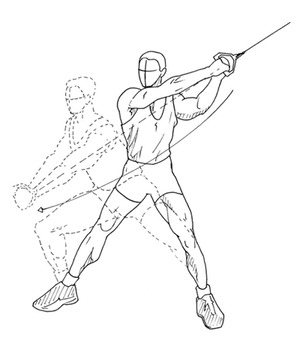
Train the newly acquired range of motion. Here’s a quick example: The adductors are a group of muscles on the inside of your leg. They can limit how far out to the side (laterally) your leg can go, we call this hip abduction. Adductors have a tendency to be really stiff and tight on a lot of people. Let’s foam roll and attempt to stretch or “mobilize” them.
You’ve likely just improved your ability to move that hip into abduction (which is actually pretty damn important for us surfers). Now you’ve got to teach your brain / body to use this new range, and be strong in this new range.
Get into some dynamic cable chops, really focusing on wide legs and a lateral lunge, shifting weight from hip to hip, using the core, and teaching your brain that the body and joints are safe in these new ranges. Your body will adapt quicker doing this.
SO WHAT’S IT ALL MEAN!?
Breathe. Be specific with your duration. Stretch to a 3-6 /10 scale. Isolate specific muscle groups if necessary. Use soft tissue release methods. Lock it in with movement or full dynamic mobility drills.
If you want more insight, moreclarity, and the simple and effective method to improving how you move, how you take care of your body, and getting out of pain…. Check out my full program Stretches For Surfers. A program covering ALL stretches, dynamic flexibility work, tissue release, joint health… everything you really need to know.
Get to work. Improve How You Move.
-cris
surf movement nutrition life


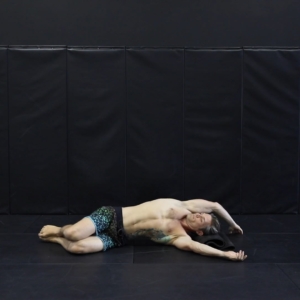
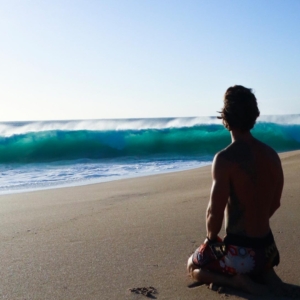
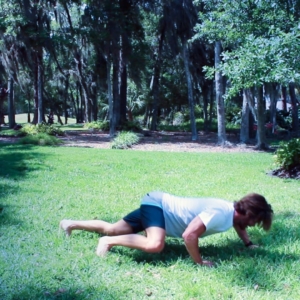
Comment